Preparation of a Flexible X-Band Radar-Wave-Absorbing Composite Material by Using Beta-Silicon Carbide and Polyurethane as Substrates and Multiwalled Carbon Nanotubes as Additives
Abstract
:1. Introduction
2. Materials and Methods
2.1. Experimental Process
- (1).
- β-SiC weight ratio: This indicates the weight ratio of β-SiC mixed with PU, with S50 meaning 50:50.
- (2).
- Weight ratio of added MWCNTs: C00 means that no MWCNTs were added, C05 means that 0.05% MWCNTs were added, C10 means that 0.10% MWCNTs were added, C15 means that 0.15% MWCNTs were added, and C20 means that 0.20% MWCNTs were added.
- (3).
- Composite thickness: T1 means 1 mm thickness, and T2 means 2 mm thickness. For example, the sample number S50C15T1 means a wave-absorbing composite with a β-SiC-to-PU ratio of 50:50, 0.15% MWCNTs added, and a thickness of 1 mm.
2.2. Instrument Analysis
2.3. Absorption Mechanism of Electromagnetic-Wave-Absorbing Materials
3. Results and Discussion
3.1. Scanning Electron Microscopic Microstructural Analysis
3.2. X-ray Diffraction Structure Determination
3.3. Microwave Absorption Properties
3.4. Reflection Loss Analysis
4. Conclusions
Author Contributions
Funding
Data Availability Statement
Conflicts of Interest
References
- Kciuk, M.; Kciuk, S.; Turczyn, R. Magnetorheological characterisation of carbonyl iron based suspension. J. Achiev. Mater. Manuf. Eng. 2009, 33, 135–141. [Google Scholar]
- Ding, D.H.; Luo, F.; Zhou, W.C.; Shi, Y.M.; Zhou, L. Research status and outlook of high temperature radar absorbing materials. J. Inorg. Mater. 2014, 29, 461–469. [Google Scholar]
- Li, Z.M.; Hu, H.L.; Luo, F. Study process of silicon carbide as high temperature microwave absorber. Rare Met. Mater. Eng. 2007, 36, 96–99. [Google Scholar]
- Hu, C.X. Stealth Coating Technology; Chemical Industry Press Co., Ltd.: Beijing, China, 2004; pp. 192–193. [Google Scholar]
- Su, X.; Zhou, W.; Xu, J.; Wang, J. Preparation and dielectric property of Al and N Co-doped SiC powder by combustion synthesis. J. Am. Ceram. Soc. 2011, 95, 1388–1393. [Google Scholar] [CrossRef]
- Su, X.; Zhou, W.; Xu, J.; Wang, J. Preparation and dielectric property of B and N-codoped SiC powder by combustion synthesis. J. Alloy. Compd. 2013, 551, 343–347. [Google Scholar] [CrossRef]
- Ke, Y.C. Polymer-Inorganic Nanocomposites; Chemical Industry Press Co., Ltd.: Beijing, China, 2017; pp. 6–35. [Google Scholar]
- Zhang, Y.L.; Li, P.; Shi, L. Stealth Materials; Chemical Industry Press Co., Ltd.: Beijing, China, 2018; pp. 2–10. [Google Scholar]
- Xie, S.G.; Jin, Q.; Meng, S.; Wang, Y.W.; Qin, Y.; Guo, X.Y. Microwave absorption properties of in situ grown CNTs/SiC composites. J. Alloy. Compd. 2012, 520, 295–300. [Google Scholar] [CrossRef]
- Cao, Y.Z.; Zhang, J.J.; Liang, Y.C.; Yu, F.L.; Sun, T. Mechanical and tribological properties of Ni/Al multilayers-A molecular dynamics study. Appl. Surf. Sci. 2010, 257, 847–851. [Google Scholar] [CrossRef]
- Liu, L.D.; Duan, Y.P.; Ma, L.X.; Liu, S.H.; Yu, Z. Microwave absorption properties of a wave-absorbing coating employing carbonyl-iron powder and carbon black. Appl. Surf. Sci. 2010, 257, 842–846. [Google Scholar] [CrossRef]
- Bowler, N. Designing dielectric loss at microwave frequencies using muti-layered filler particles in a composite. IEEE Trans. Dielectr. Electr. Insul. 2006, 13, 703–711. [Google Scholar] [CrossRef]
- Maeda, T.; Sugimoto, S.; Kagotani, T.; Tezuka, N.; Inomata, K. Effect of the soft/hard exchange interaction on natural resonance frequency and electromagnetic wave absorption of the rare earth–iron–boron compounds. J. Magn. Magn. Mater. 2004, 281, 195–205. [Google Scholar] [CrossRef]

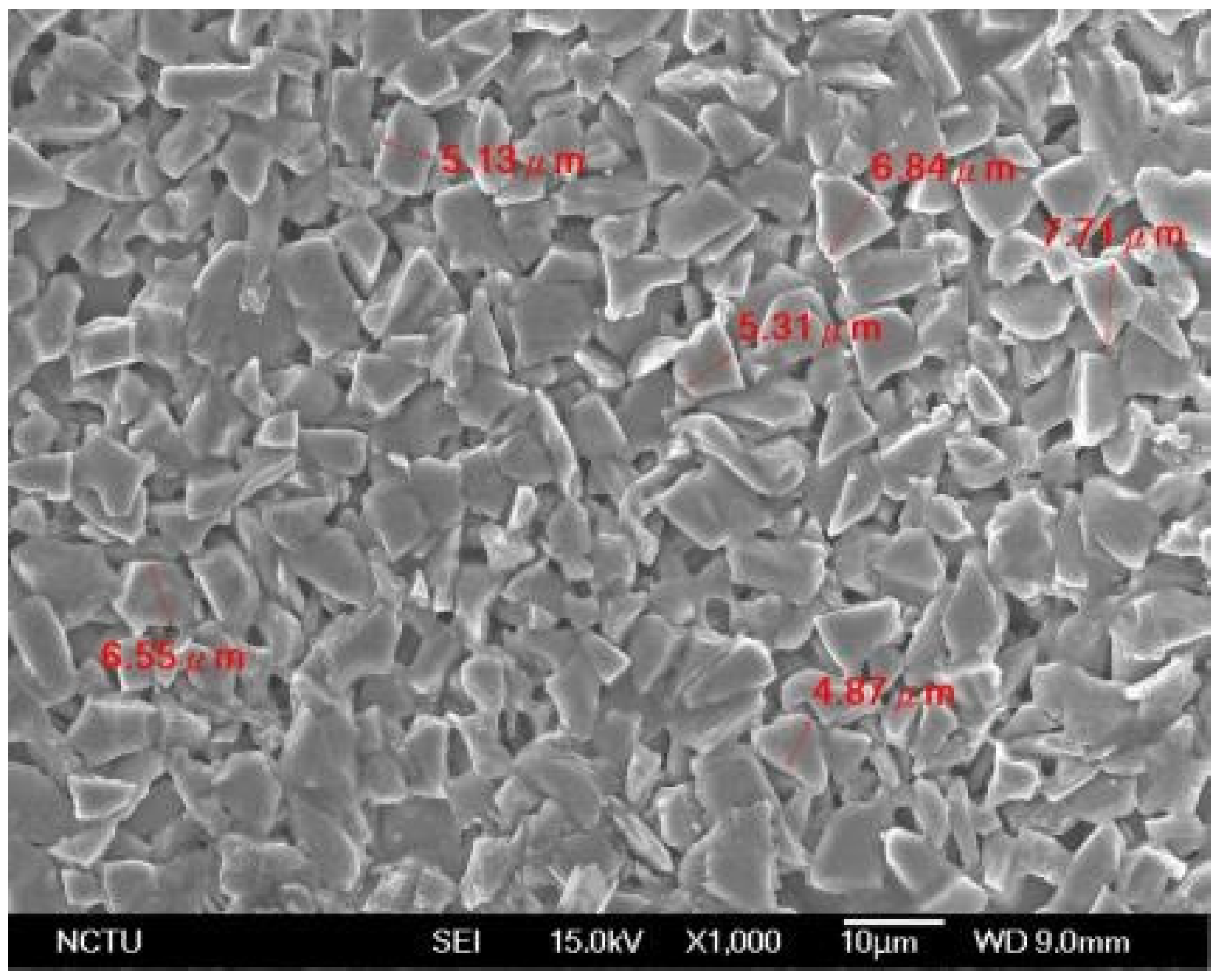
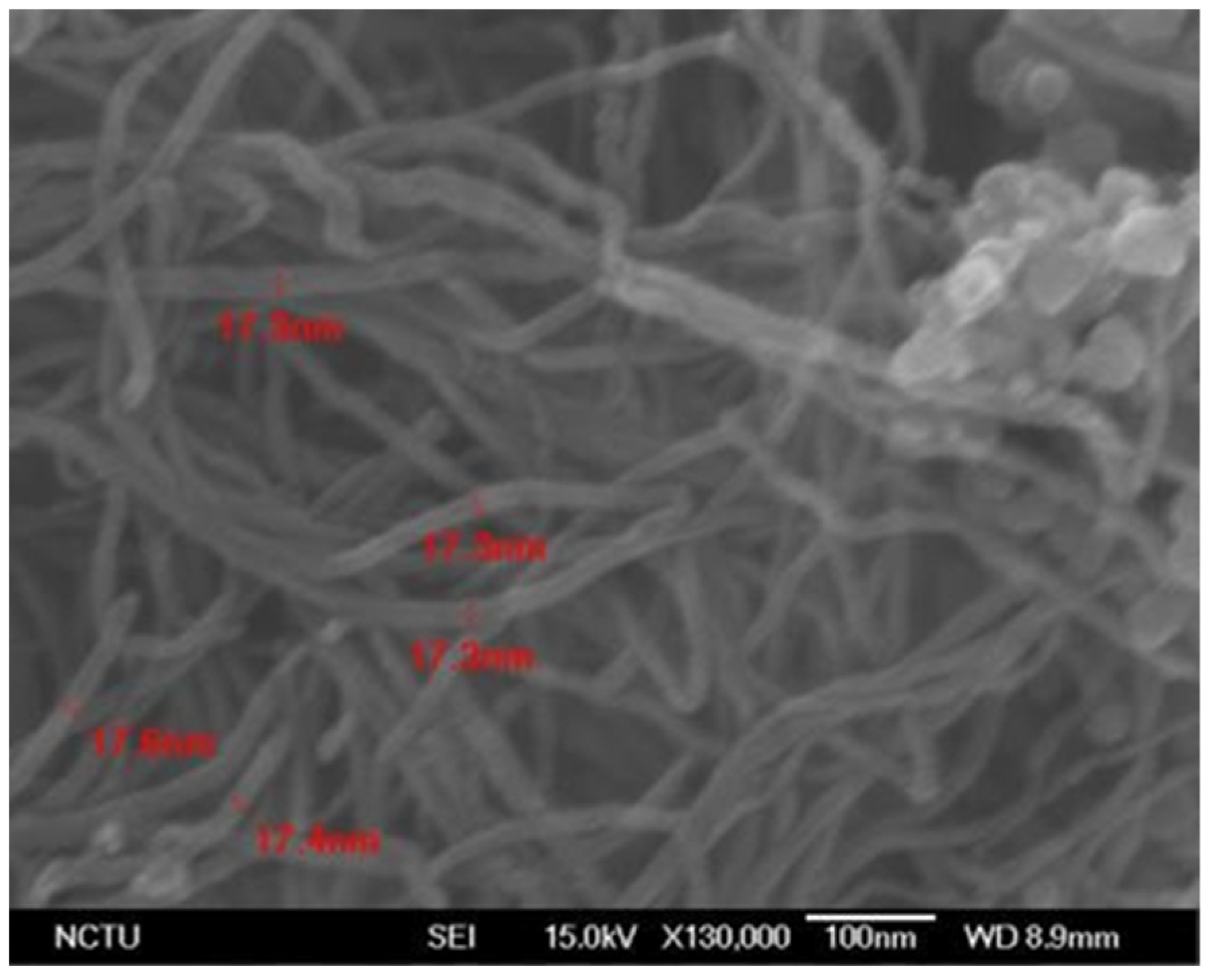


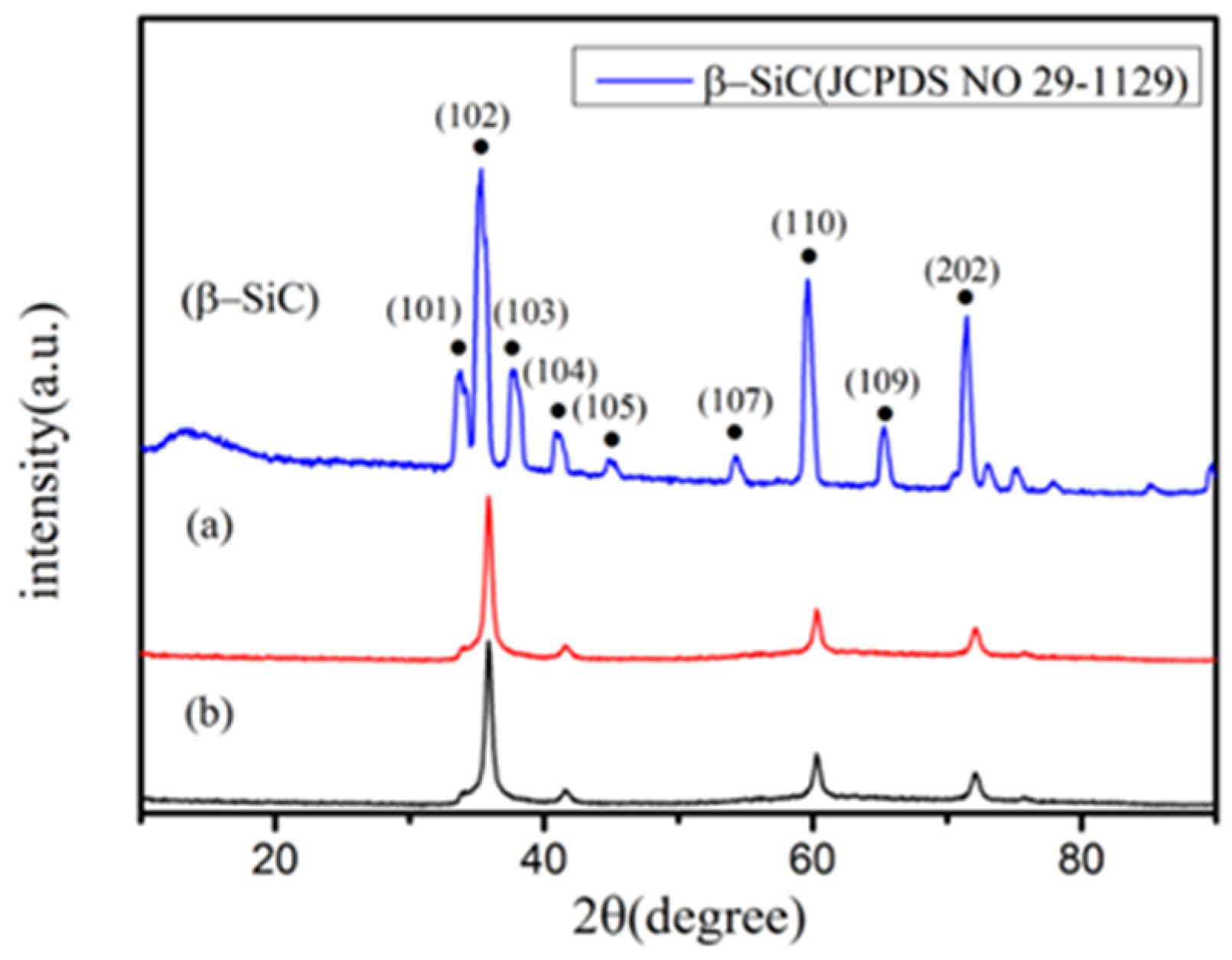
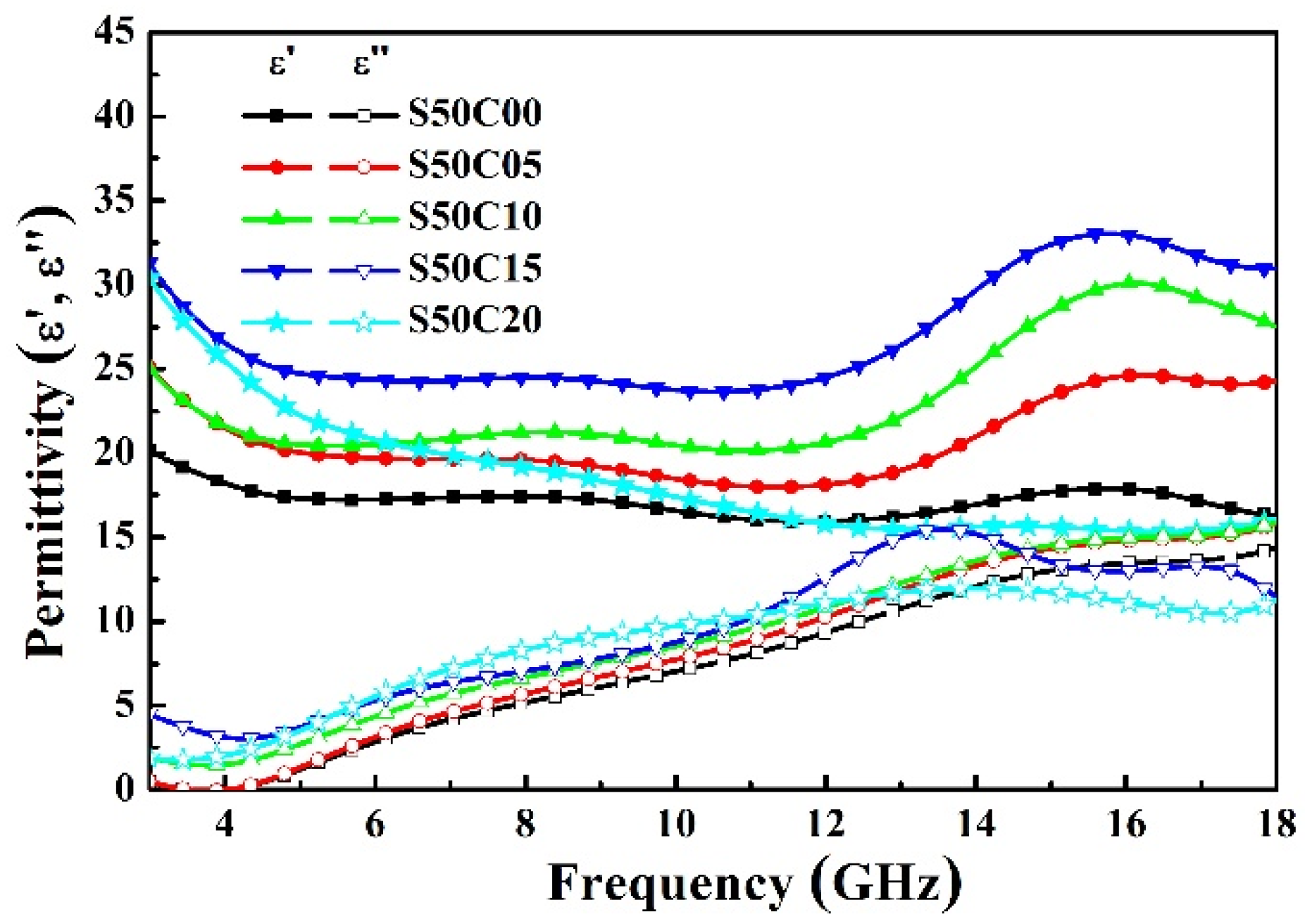
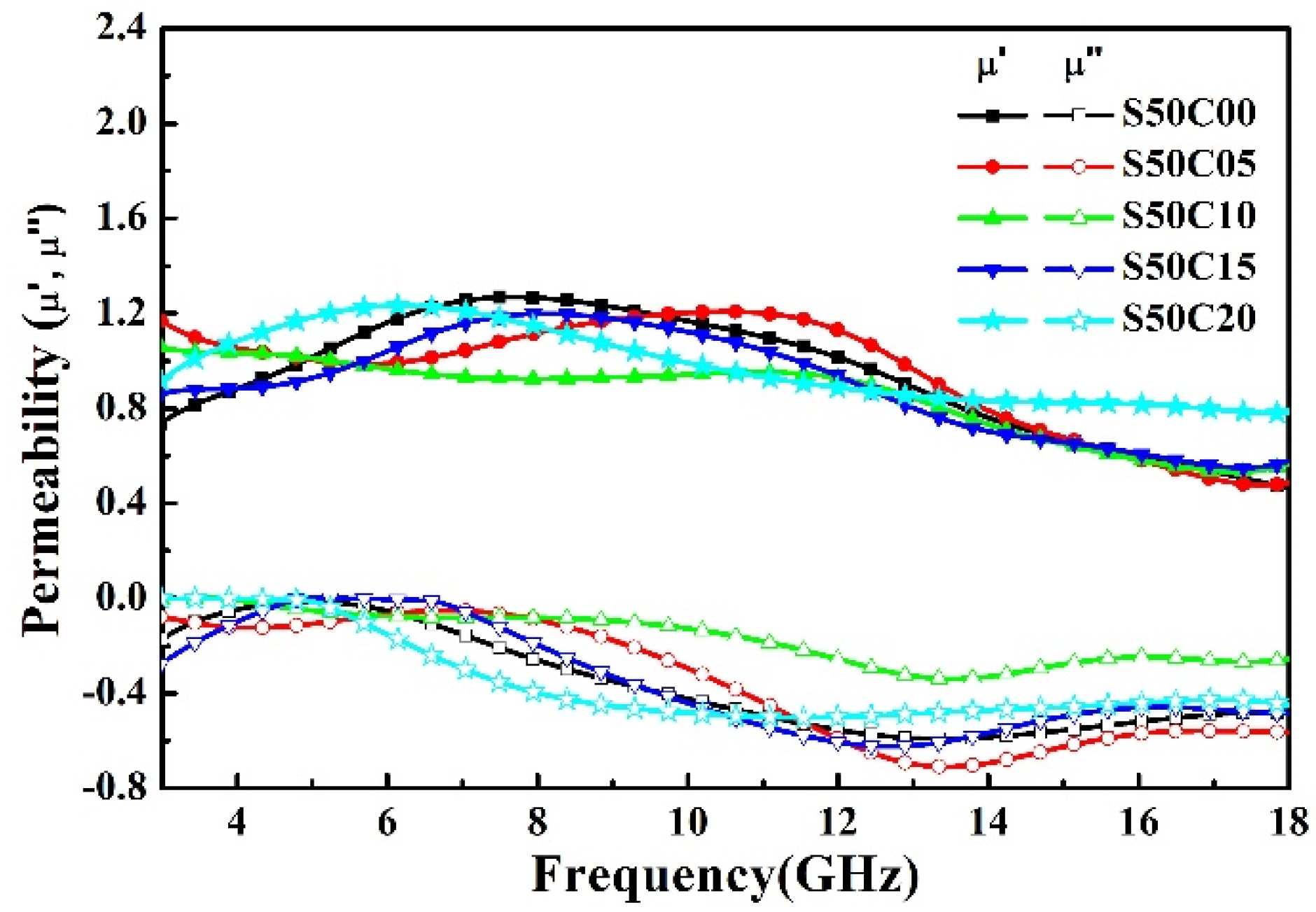
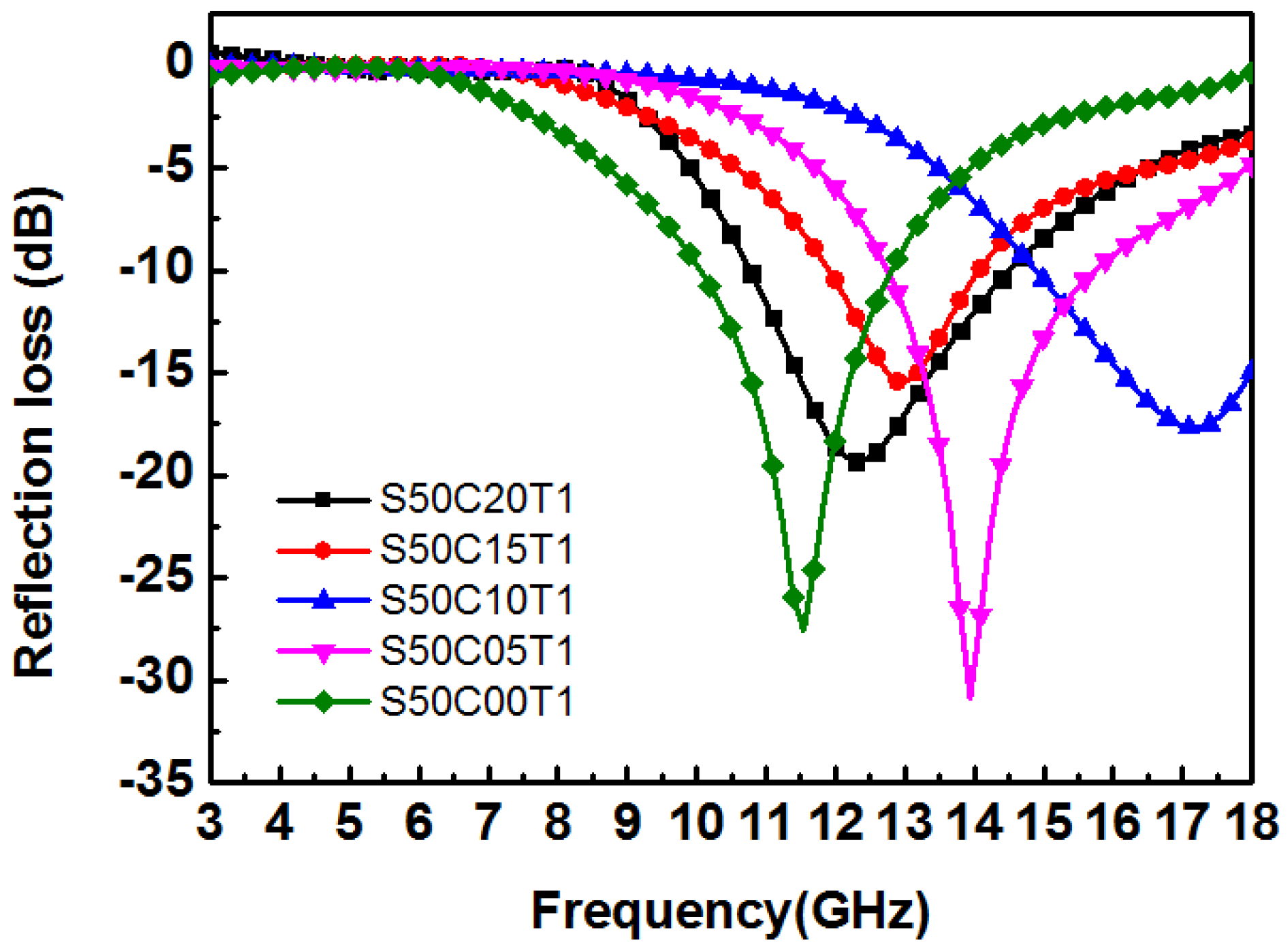

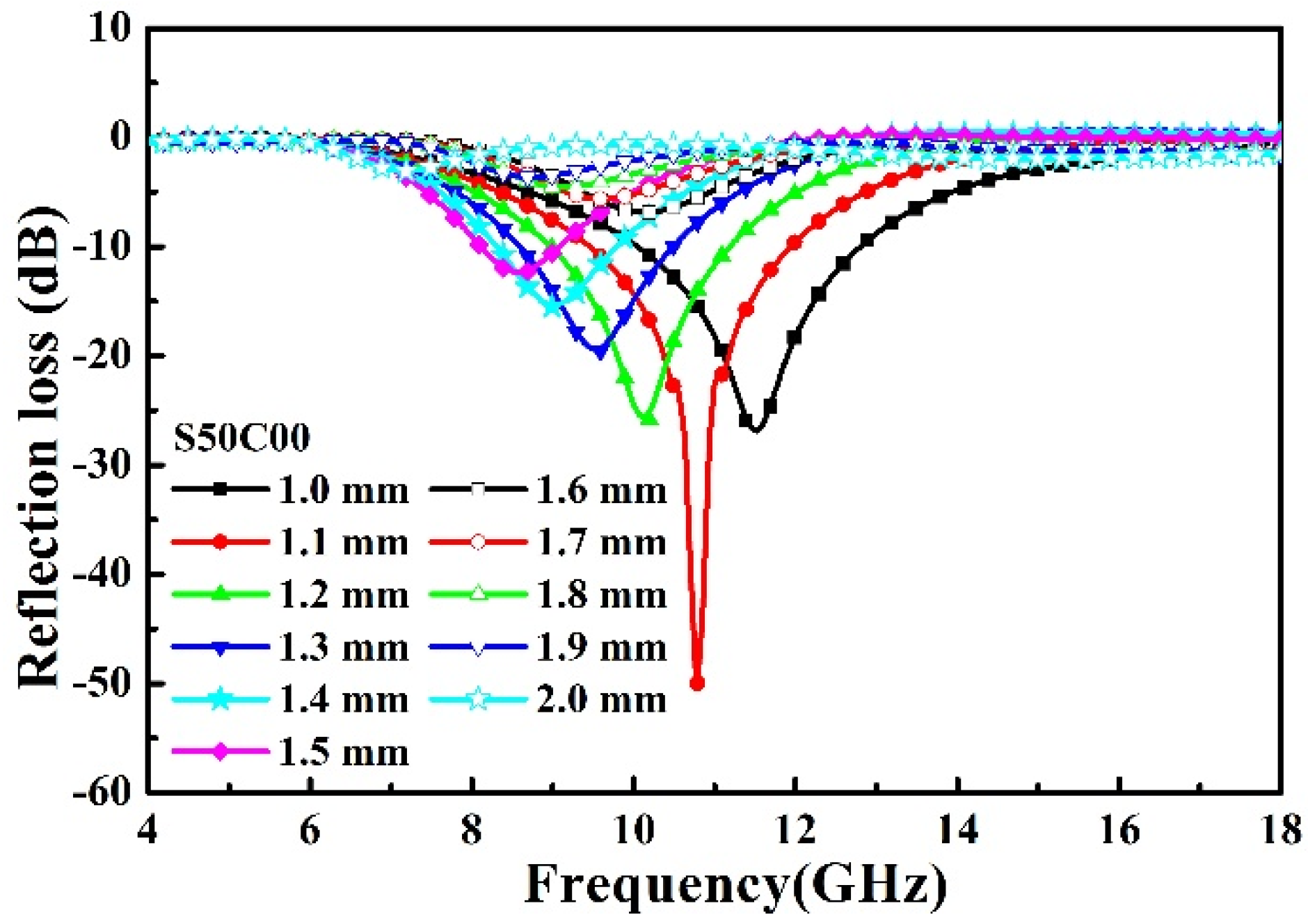
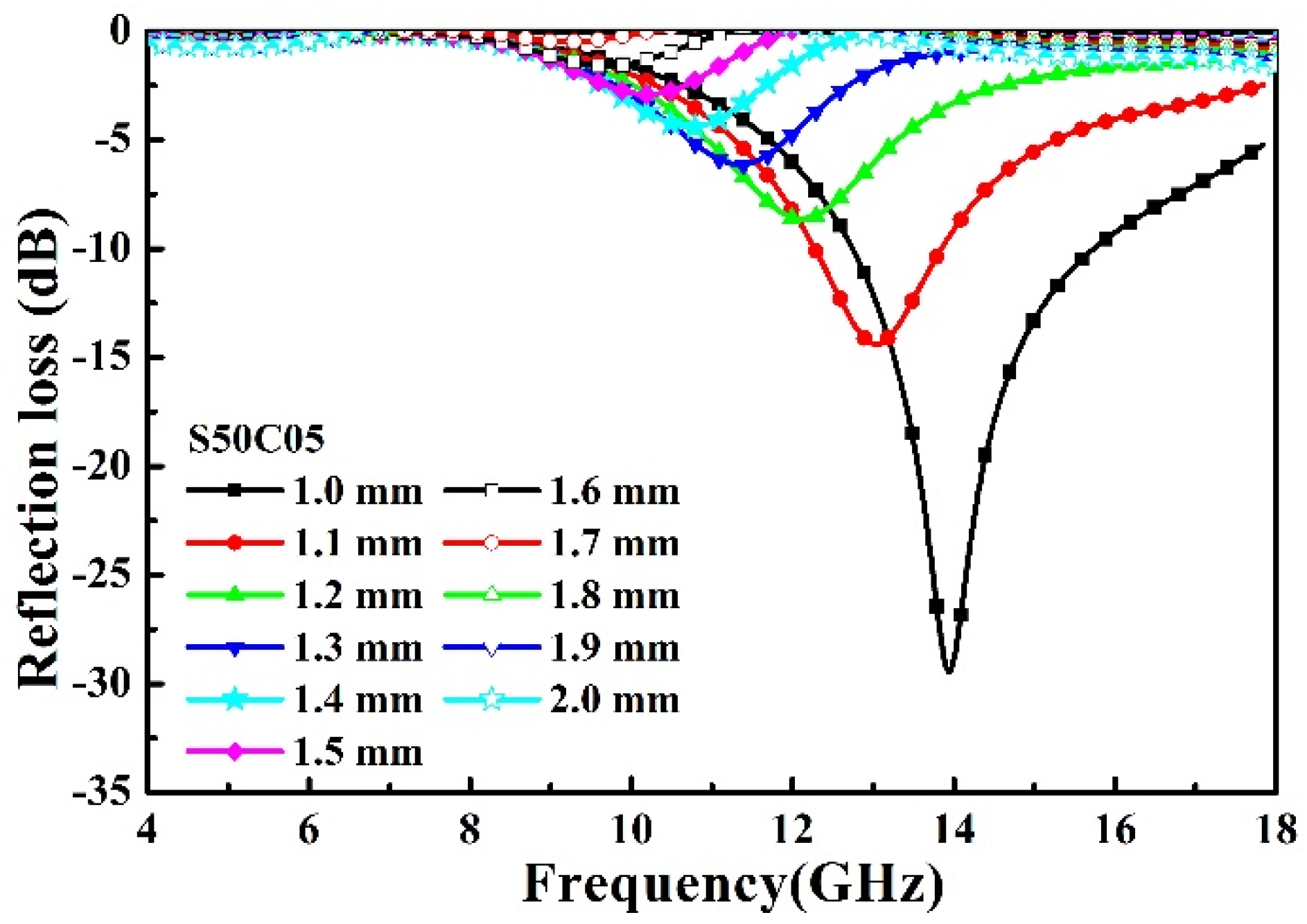
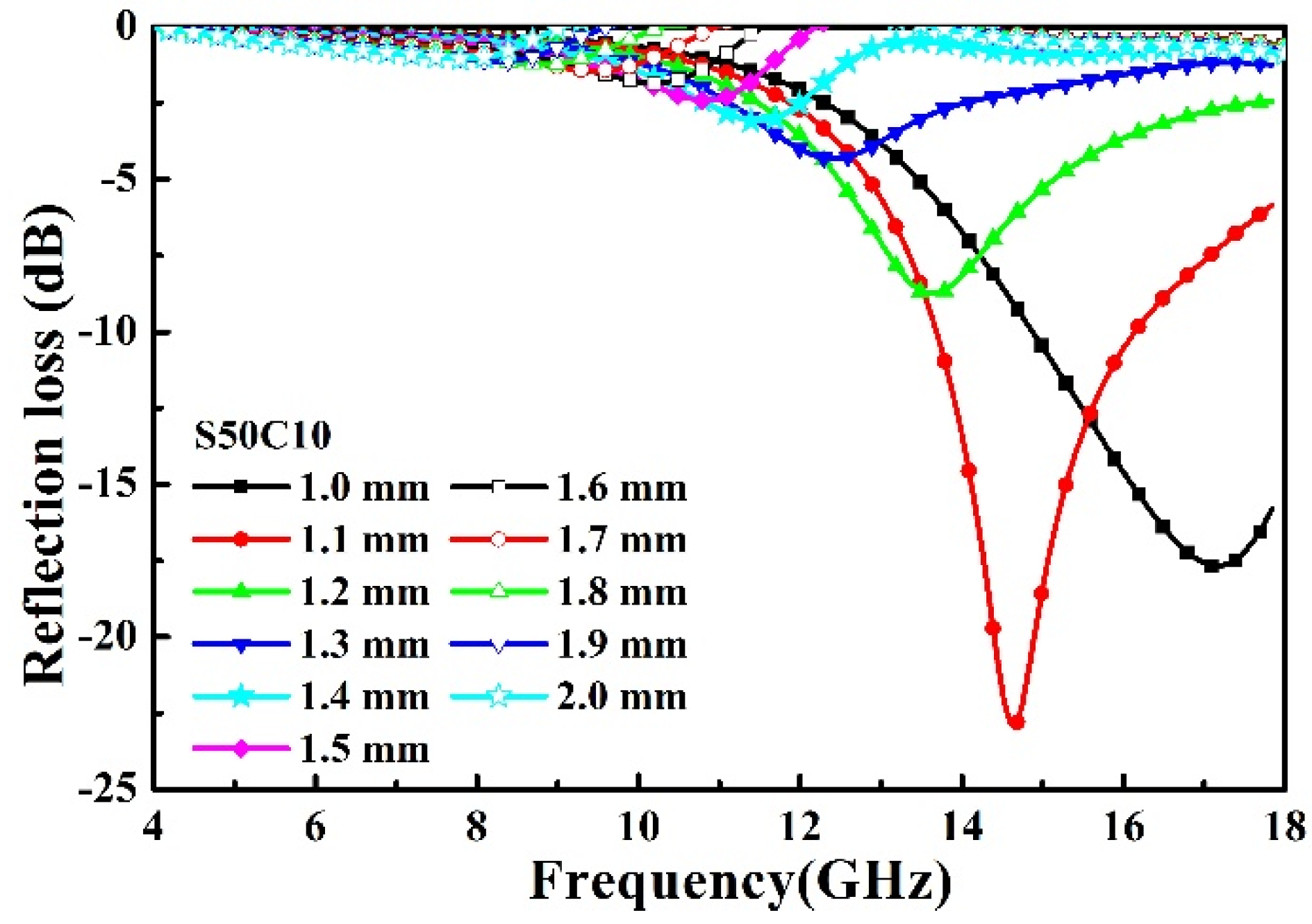
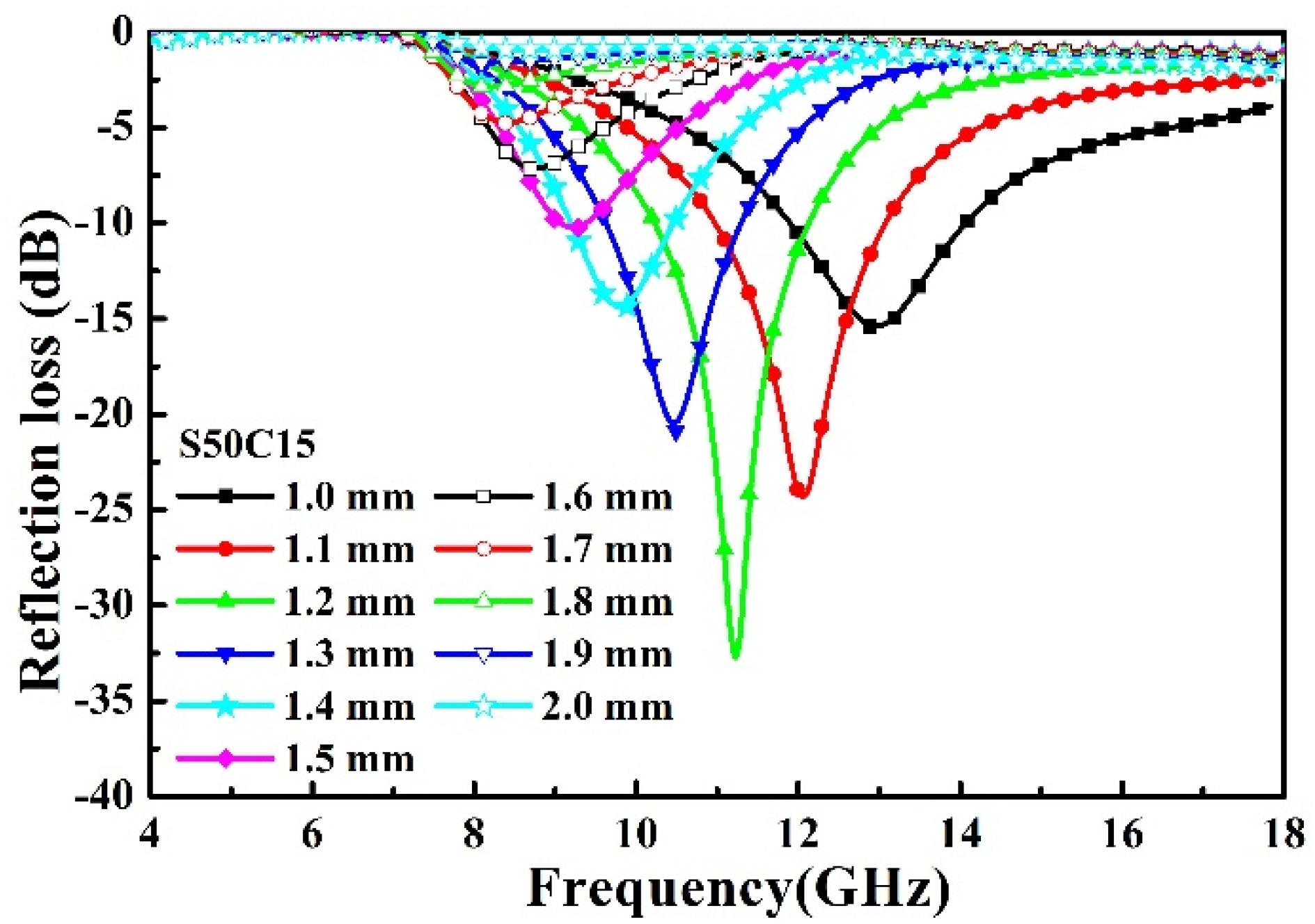
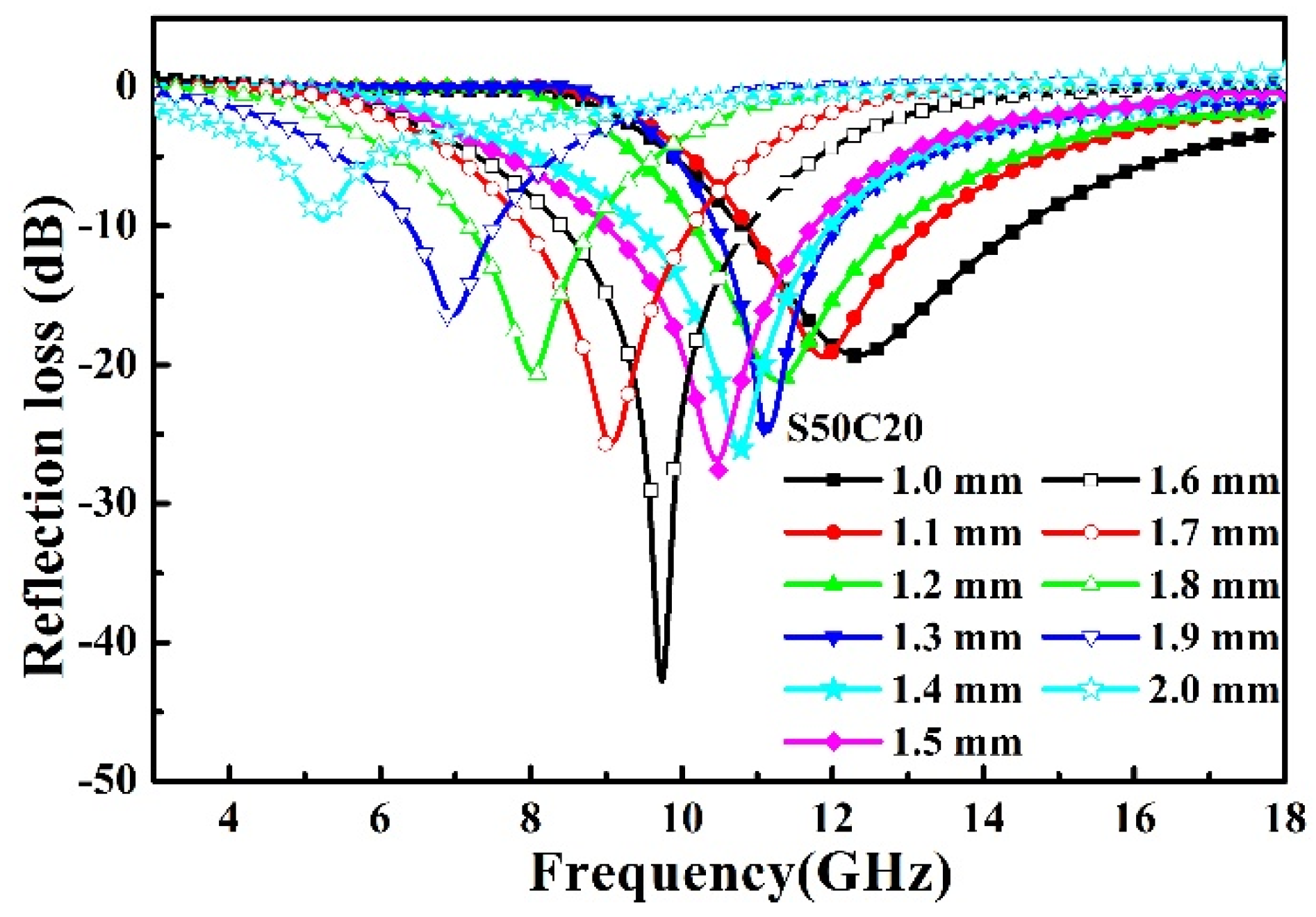
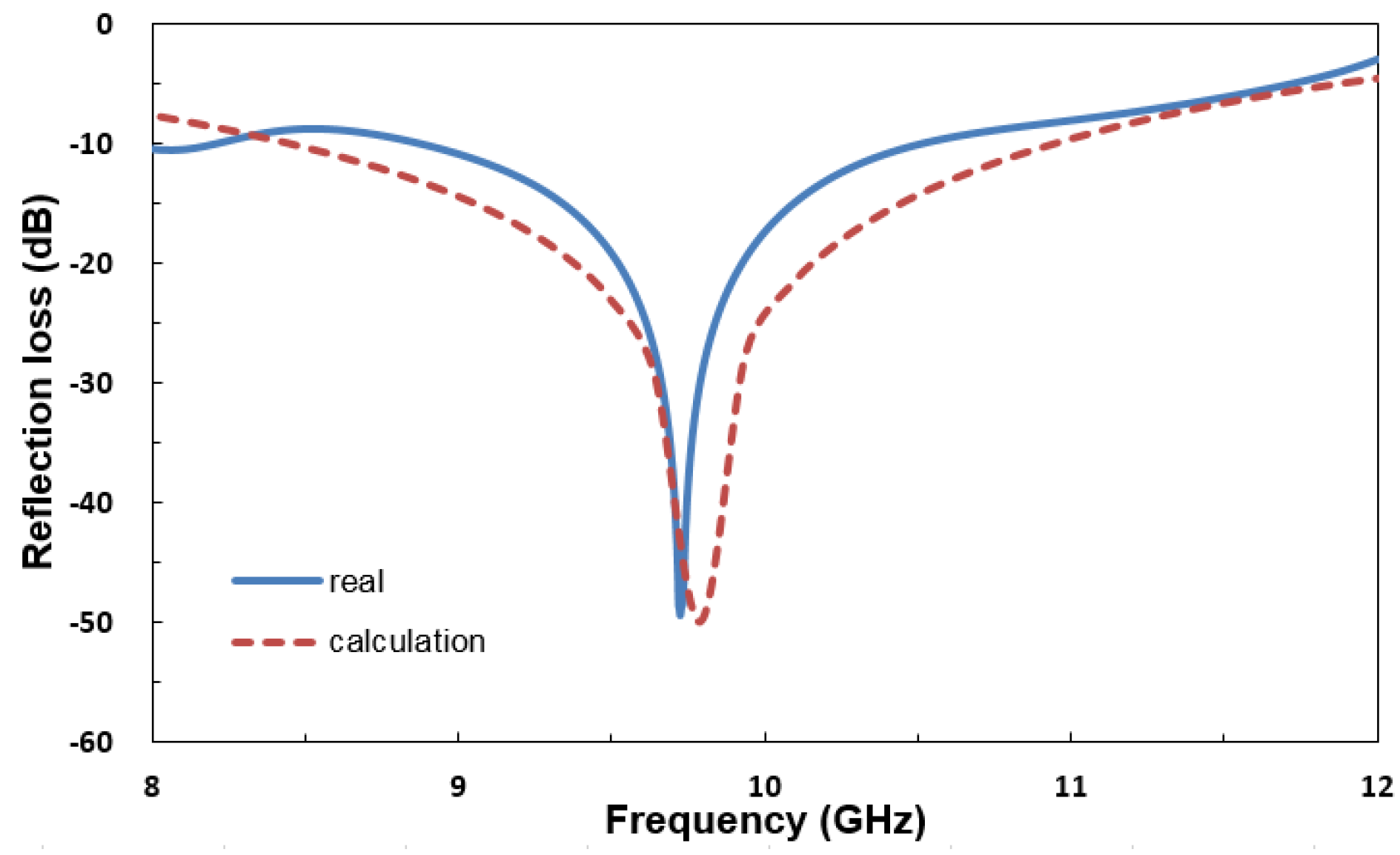
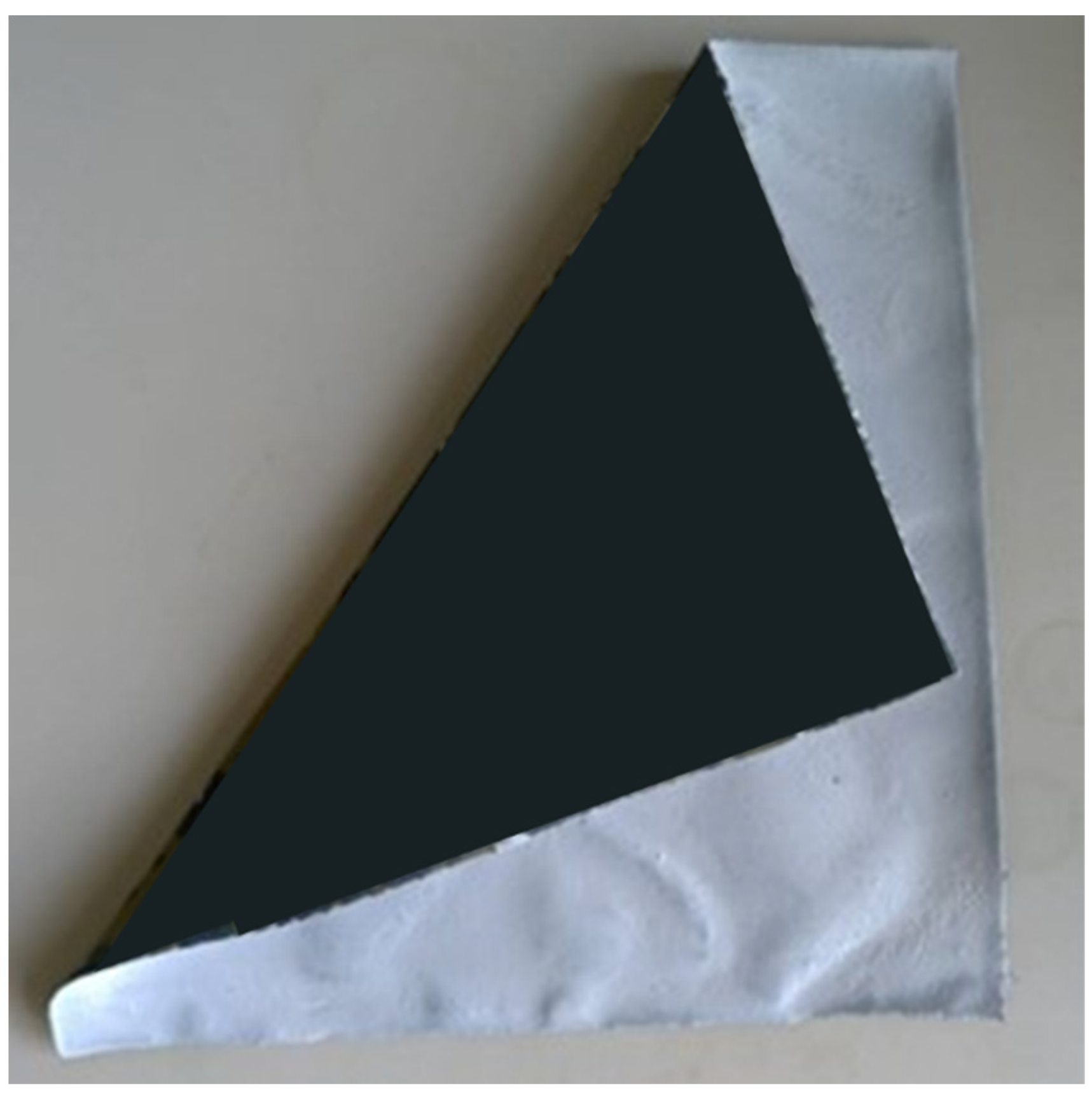
| Group | SiC Weight Ratio % | MWCNT Added Ratio wt% | Thickness (mm) |
|---|---|---|---|
| S50C00T1 | 50:50 | 0.00 | 1 |
| S50C00T2 | 0.00 | 2 | |
| S50C05T1 | 0.05 | 1 | |
| S50C05T2 | 0.05 | 2 | |
| S50C10T1 | 0.10 | 1 | |
| S50C10T2 | 0.10 | 2 | |
| S50C15T1 | 0.15 | 1 | |
| S50C15T2 | 0.15 | 2 | |
| S50C20T1 | 0.20 | 1 | |
| S50C20T2 | 0.20 | 2 |
Publisher’s Note: MDPI stays neutral with regard to jurisdictional claims in published maps and institutional affiliations. |
© 2022 by the authors. Licensee MDPI, Basel, Switzerland. This article is an open access article distributed under the terms and conditions of the Creative Commons Attribution (CC BY) license (https://creativecommons.org/licenses/by/4.0/).
Share and Cite
Hu, S.-H.; Yuan, J.-J.; Dai, H.; Liu, Y.-Y.; He, J.; Tu, J.-L. Preparation of a Flexible X-Band Radar-Wave-Absorbing Composite Material by Using Beta-Silicon Carbide and Polyurethane as Substrates and Multiwalled Carbon Nanotubes as Additives. Symmetry 2022, 14, 2144. https://doi.org/10.3390/sym14102144
Hu S-H, Yuan J-J, Dai H, Liu Y-Y, He J, Tu J-L. Preparation of a Flexible X-Band Radar-Wave-Absorbing Composite Material by Using Beta-Silicon Carbide and Polyurethane as Substrates and Multiwalled Carbon Nanotubes as Additives. Symmetry. 2022; 14(10):2144. https://doi.org/10.3390/sym14102144
Chicago/Turabian StyleHu, Shao-Hwa, Jiao-Jiao Yuan, Hang Dai, Yang-Yang Liu, Jing He, and Jun-Ling Tu. 2022. "Preparation of a Flexible X-Band Radar-Wave-Absorbing Composite Material by Using Beta-Silicon Carbide and Polyurethane as Substrates and Multiwalled Carbon Nanotubes as Additives" Symmetry 14, no. 10: 2144. https://doi.org/10.3390/sym14102144
APA StyleHu, S.-H., Yuan, J.-J., Dai, H., Liu, Y.-Y., He, J., & Tu, J.-L. (2022). Preparation of a Flexible X-Band Radar-Wave-Absorbing Composite Material by Using Beta-Silicon Carbide and Polyurethane as Substrates and Multiwalled Carbon Nanotubes as Additives. Symmetry, 14(10), 2144. https://doi.org/10.3390/sym14102144





